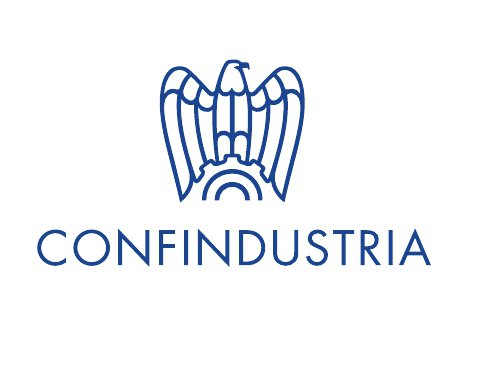S&P Global's data and analysis of international production, from the United States to Europe and China, paint a gloomy picture and outlook, weighed down by inflation, as the specter of recession looms. [Here’s What’s Going On in Some of the World’s Biggest Manufacturing Zones – SJ]
At 52.4 in June, down from 57.0 in May, the S&P Global Flash U.S. Manufacturing Purchasing Managers Index (PMI) indicated a slower improvement in operating conditions across the goods-producing sector. The overall upturn was the weakest in almost two years, as contractions in output and new orders weighed on the headline figure.
Declines in production and new sales were driven by weak client demand, as inflation, material shortages and delivery delays led some customers to pause or lower their purchases of goods. The falls were the first since the depths of the pandemic in mid-2020 and were accompanied by a renewed decrease in foreign client demand.
S&P Global said average cost burdens continued to rise substantially and at a historically elevated pace in June. Hikes in vendor, material and fuel prices all drove up inflation. However, the rise in input prices was the slowest since April 2021.
Goods producers registered the lowest degree of confidence in the outlook for output over the coming year for 20 months in June. Despite hopes that demand will improve and investment increase, concerns regarding inflation, interest rates, supply chain disruption and the health of the wider economy weighed on expectations.
“The pace of U.S. economic growth slowed sharply in June, with deteriorating forward-looking indicators setting the scene for an economic contraction in the third quarter,” Chris Williamson, chief business economist at S&P Global Market Intelligence, said.
“The survey data are consistent with the economy expanding at an annualized rate of less than 1 percent in June, with the goods-producing sector already in decline and the vast service sector slowing sharply.”
“Businesses have become much more concerned about the outlook as a result of the rising cost of living and drop in demand, as well as the increasingly aggressive interest rate path outlined by the Federal Reserve and the concomitant deterioration in broader financial conditions,” Williamson added. “Business confidence is now at a level which would typically herald an economic downturn, adding to the risk of recession. A corollary of the drop in demand was less pressure on prices, with the survey’s inflation gauges for firms’ costs and their selling prices falling sharply in June to suggest that, although still elevated, price pressures have peaked.”
Eurozona
S&P Global Eurozone Manufacturing June PMI survey data showed the manufacturing economy ending the second quarter on a low, as production levels fell for the first time in two years. The S&P Global Eurozone Manufacturing PMI fell from 54.6 in May to 52.1 in June, its lowest reading since August 2020 and a fifth consecutive month of decline in the headline measure.
Evidence of worsening conditions for goods producers was seen across many of the sub-indices of the latest PMI survey, with new business intakes and export orders both declined, while business confidence slid to a 25-month low.
Backlogs of work, which have been built up significantly throughout the pandemic, also fell for the first time in almost two years as companies focused on completing unfilled orders due to falling demand, S&P Global said.
There were tentative signs of supply chains edging closer to stability, as input lead times lengthened “to the least marked extent” in a year-and-a-half, S&P noted. There was also a softening of inflationary pressures, with input costs and output prices rising at slower rates.
The best-performing country for PMI was once again the Netherlands, although growth slumped to a 19-month low. Compared to May, Austria registered the sharpest slowdown, with its manufacturing PMI falling more than five index points. The weakest-performing nation was Italy, which registered its softest upturn in two years.
“Orders for goods have fallen at an accelerating rate over the past two months, dropping in June in every country surveyed with the exception of the Netherlands, and even here the rate of growth has weakened markedly in recent months,” Williamson said. “Demand is now weakening as firms report customers to be growing more cautious in relation to spending due to rising prices and the uncertain economic outlook. The downturn looks set to gain momentum in coming months. Inventories of both raw materials and unsold stock are rising due to lower than expected production and sales volumes, hinting that an inventory correction will act as an additional drag on the sector in coming months.”
“One upside to the recent weakening of demand is an alleviation of some supply chain constraints, which has in turn helped cool inflationary pressures for industrial goods,” Williamson added. “With the survey data indicating an increasing likelihood of the manufacturing sector slipping into a recession, these price pressures should ease further in the third quarter.”
U.K.
The slowdown in the U.K. manufacturing sector continued at the end of the second quarter, as June saw output growth grind to a near-standstill pace and new orders contract for the first time in 17 months, according to S&P Global.
Business optimism dipped to its lowest since May 2020, as the number of firms expecting production to rise over the coming year fell to 47 percent from 55 percent in May. Firms raised concerns about flat domestic demand, weaker export markets, inflationary pressure, the effect of the increased cost of living on consumer demand and supply chain issues.
The seasonally adjusted S&P Global-CIPS U.K. Manufacturing PMI fell to a two-year low of 52.8 in June, down from 54.6 in May.
Manufacturing production rose for the 25th consecutive month in June. However, the rate of expansion was the weakest during the current upturn. Consumer goods producers saw a marked downturn in output, while robust expansion was again registered in the investment goods industry.
“Domestic market conditions became increasingly difficult and foreign demand fell sharply again, stifled by Brexit, transport disruption, the war in Ukraine and a global economic slowdown,” Rob Dobson, director at S&P Global Market Intelligence, said. “Business confidence took a hit as a result, dipping to its gloomiest since mid-2020. Jobs growth also slowed sharply amid the increasingly uncertain outlook and recent surge in energy costs. The consumer goods sector was especially hard hit, as household demand suffered a steep retrenchment on the back of the cost-of-living crisis.”
Dobson said there were some welcome signs that supply-chain constraints and cost inflationary pressures may have passed their peaks. However, with these constraints still elevated overall and demand headwinds rising, it is likely that U.K. manufacturing will see the economic backdrop darken further in the second half of the year, he added.
China
The reduction in Covid-19 case numbers and subsequent easing of containment measures across China led to a renewed improvement in manufacturing business conditions in June, according to the Caixin China General Manufacturing PMI compiled by S&P Global.
Output expanded sharply as disruption to operations receded, with the rate of growth the best in 18 months. New orders and new export sales also returned to growth, though rates of expansion were modest overall. Supply chains stabilized, ended a two-year streak of worsening lead times.
The manufacturing PMI increased to 51.7 from 48.1 in June, the first improvement in the health of the sector for four months. Though modest, the rate of increase was the strongest seen since May 2021.
“After three months of contraction, the gauge for output returned to expansionary territory and jumped to its highest point since November 2020,” Dr. Wang Zhe, senior economist at Caixin Insight Group, said.
“The recovery of manufacturing demand was not as strong as that of supply, but the subindex for total new orders rose above 50 for the first time in four months, and the gauge for new export orders returned to positive territory for the first time since last July…The prices of raw materials and freight remained high, adding to manufacturers’ costs.”
“While supply has not fully recovered from lockdown-induced disruption, some companies reported sharp decreases in suppliers’ delivery times,” Zhe added. “The gauge for suppliers’ delivery times topped 50 for the first time in two years. The quantity of manufacturing purchases greatly increased, while backlogs of work declined…Business owners expressed concern over the negative impact of future domestic Covid outbreaks and the state of the global economy.”
India
The economic recovery of the Indian manufacturing sector continued in June, aided by robust domestic and international client demand. However, growth of total sales and production eased amid intense price pressures, S&P Global said.
Although the rate of input cost inflation remained historically high, the latest increase was the slowest in three months. Inflation concerns continued to dampen business confidence, with sentiment slipping to a 27-month low.
Posting 53.9 in June, the S&P Global India Manufacturing PMI signaled a 12th consecutive monthly improvement in the health of the sector. However, softer increases in production, factory orders, stocks of purchases and employment all dragged down the PMI in June.
June data indicated that rates of purchase price and output charge inflation retreated to three-month lows, but remained above their long-run averages. Monitored firms reported increases for a wide range of inputs–including textiles, chemicals, electronics, energy and metals–which they partly passed on to clients in the form of higher selling prices.
“The Indian manufacturing industry ended the first quarter of fiscal year 2022-23 on a solid footing, displaying encouraging resilience on the face of acute price pressures, rising interest rates, rupee depreciation and a challenging geopolitical landscape,” Pollyanna De Lima, economics associate director at S&P Global Market Intelligence, said. “Yet, there was a broad-based slowdown in growth across a number of measures, such as factory orders, production, exports, input buying and employment, as clients and businesses restricted spending amid elevated inflation.”
There was positive news regarding supply chains, with the latest results showing the first shortening of input lead times since the onset of COVID-19.
This seemed to have curbed the upward pressure on input costs, with purchase prices and output charges increasing at sharp but slower rates during June,” she added.
Vietnam
The Vietnamese manufacturing sector ended the first half of 2022 firmly in expansion mode, as a lack of disruption from the pandemic supported demand and production, S&P Global said.
Issues with global shipping and Covid restrictions in China meant that suppliers’ delivery times continued to lengthen markedly, while inflationary pressures remained elevated. The Vietnam Manufacturing PMI posted 54.0 in June, down slightly from 54.7 in May but still signaling a solid monthly improvement in the health of the sector. Business conditions have now strengthened in each of the past nine months.
“The Vietnamese manufacturing sector ends the first half of 2022 in good health, with firms feeling that they’ve seen the back of the pandemic and are able to generate new business at a solid rate,” Andrew Harker, economics director at S&P Global Market Intelligence, said. “The main positive from the latest PMI survey was around employment, which increased at the fastest pace in three-and-a-half years. This shows that the difficulties firms were facing getting hold of staff around the turn of the year have eased, and means that manufacturers are able to respond quickly to customer requests and keep on top of workloads.”



